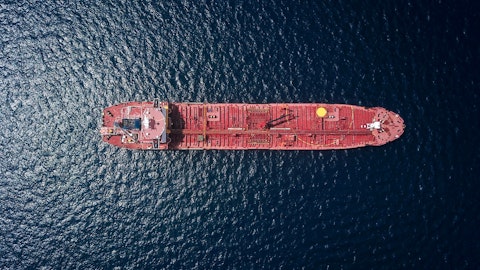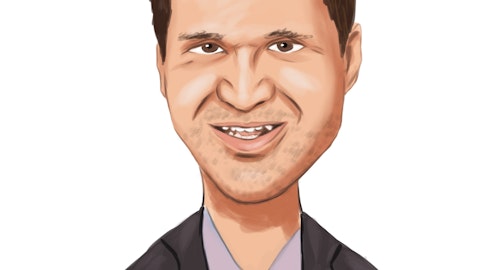Utility, for the most part, it’s hanging in there pretty well. We think that’s still an item that we can lean into to even be more effective on the productivity side of the house. And then the question is, in our view, there is a percent of the book that we don’t consider sustainable and how quickly can we pivot when better opportunities start to materialize.
Scott Group : Okay. And then just secondly, when I just look at Truckload margins today versus ’19 and Intermodal today versus ’19, Truckload is actually holding up better than ’19, Intermodal maybe now a little bit worse. Any thoughts on why we’re seeing those two businesses perform a little bit differently? And then you and others have just tons of these boxes parked. Do you think that, that limits some of the Intermodal pricing upside whenever this demand inflection comes? Or are you not worried about that?
Mark Rourke : There are several questions there.
Steve Bruffett : I’ll start on the first part of that compared to ’19, which was a prior downcycle of reference there. Within our truck segment, I think the biggest single contributor to better margins this time around is just the composition within truck. We have much larger representation from our dedicated operations within our Truckload segment than what we had even 3 or 4 years ago as we’ve continued to grow and develop that. The stability of those margins are part of why we’ve been strategically pursuing that growth in Dedicated over the past several years. And so we’re seeing some of the fruits of that purposeful steering. So Jim, the Intermodal question about that.
James Filter : Yes. Stack containers and first of all, that’s part of the difference between now and 2019. We do have more available capacity to be able to grow. In terms of the weight that might put on pricing, I don’t believe it’s the same type of equation that we have in Truckload. The cost of having a driver, a truck, a trailer at the standby is not the same type of cost impact that you experienced with Intermodal having a container of that stack. So I believe that we’ll still be disciplined as the market starts to correct.
Mark Rourke : So maybe just another color from our view, as we look at our chessboard with our Intermodal offering going forward versus what we were positioned in 2019, we think we are positioned very favorably. We just haven’t a chance to exercise all of those new opportunities and relationships to the extent yet. And so we very much look forward to even a slight recovery. I think we’ll have a nice flywheel effect for the business, and that’s — we consider that all in front of us.
Scott Group : You’re just talking about the different rail contracts you have now?
Mark Rourke : And providers’ network and our ability to execute.
Operator: Our next question comes from Bascome Majors with Susquehanna.
Bascome Majors : With the second quarter being the first where you’ve been active on the buyback, can you talk a little bit about how that’s worked out with your expectations? Is it interplaying well with the dual class share structure and limited float? And longer term, as you get through this program, do you see a path to having a more active share reduction style buyback as part of your capital allocation strategy?
Steve Bruffett : Yes, it’s Steve. I’ll take that one. As far as the second quarter, we did want to get the program off to a solid start. We did identify some good buying opportunities during the quarter. So with nearly 1.4 million shares already repurchased, we’ll likely assume a moderate but steady pace of repurchases across the remainder of the year. Like we articulated when we launched this $150 million authorization, we are aware of our public float and aren’t looking to do anything that disrupts that in any meaningful way. And so we’re behaving with some discipline there. And ultimately, once we stabilize to get to our desired share count, like we said, we anticipate that it would be more of a maintenance program where we offset the dilutive impact of equity grants going forward, but understand that there are some constraints as to just how far we can go, given the parameters we work within today.




